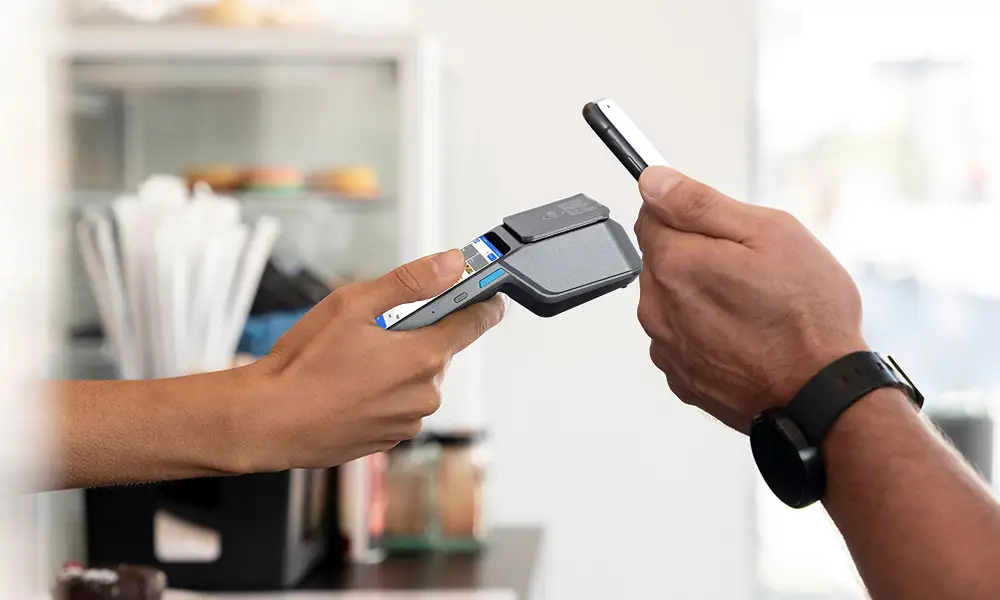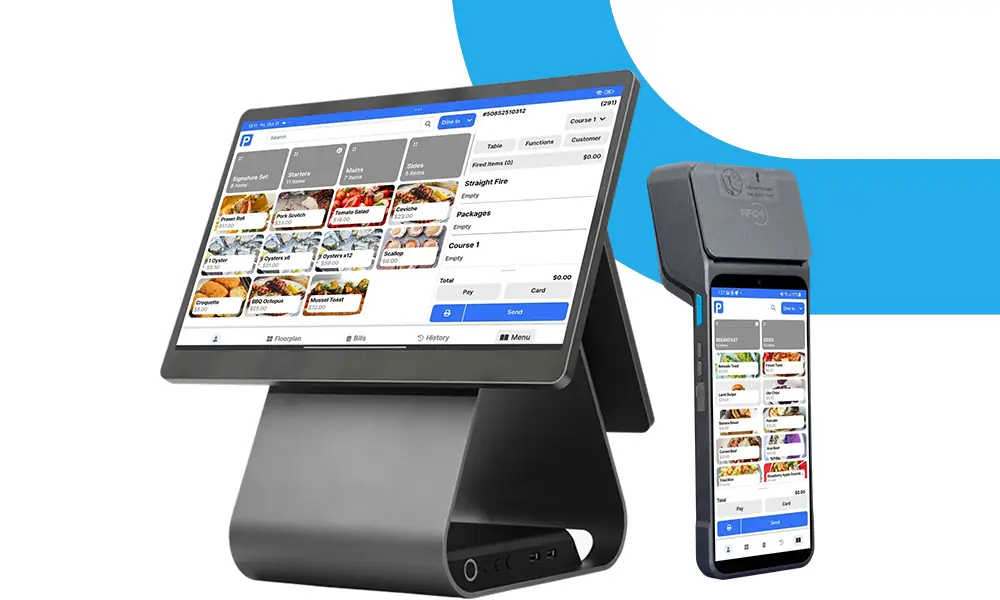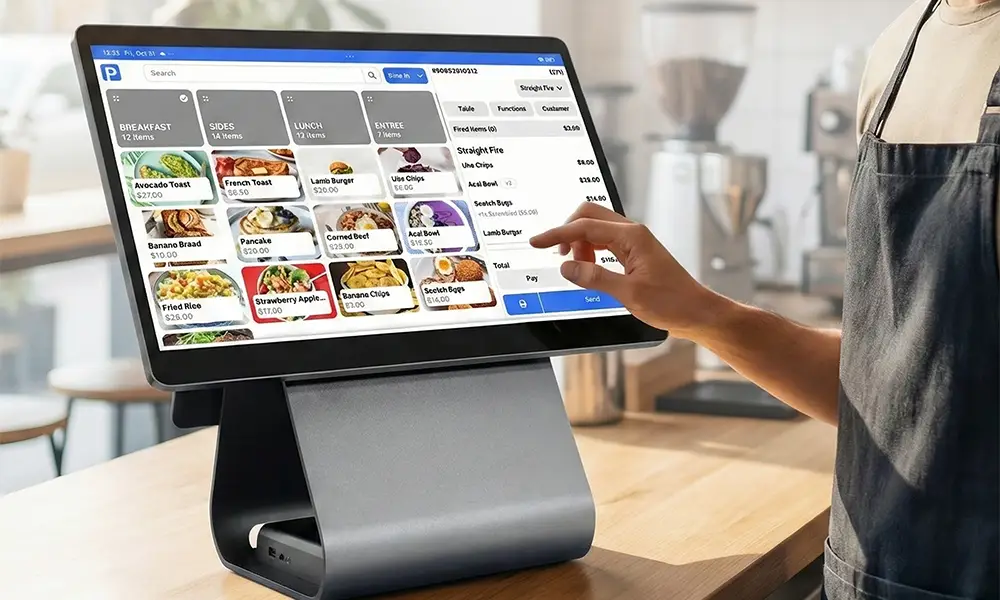Have you noticed customers tapping their feet in line? Or maybe your staff are fumbling with outdated POS equipment, causing frustrating delays? For many businesses, a clunky checkout process is a significant pain point.
Whether it’s retail, hospitality, or a service-based business, the checkout experience can make or break customer satisfaction. So, here’s a question: can a touch screen POS system be the answer to smoother, faster transactions?
The short answer is yes. A touch screen POS system brings simplicity, speed, and flexibility to your checkout, allowing staff to process transactions quickly and reducing wait times for customers.
In this guide, we’ll explore the advantages of a touch screen POS, the must-have features, and tips on choosing the right one for your business.
1. What is a Touch Screen POS System?
A touch screen POS system is a point-of-sale system that operates through a digital touchscreen rather than traditional keyboards and buttons. These systems are built with user-friendly interfaces that allow staff to navigate with taps and swipes, speeding up everything from sales transactions to inventory checks.
Key Components of a Touch Screen POS System
- Touchscreen Monitor: The main interface where transactions are processed and customer information is accessed.
- POS Software: Allows staff to handle sales, manage inventory, and track customer data.
- Card Reader: For processing card payments, often integrated for contactless options.
- Printer: To print receipts, order tickets, or other necessary documents.
- Barcode Scanner: An optional add-on, useful in retail for scanning items quickly.
Together, these components streamline the checkout process and enhance your staff’s ability to assist customers efficiently.
2. Benefits of a Touch Screen POS System for Your Business
Touch screen POS systems have taken the business world by storm—and for good reason. Here are the top advantages that make them indispensable for modern businesses:
1. Faster Transactions
The intuitive touch screen interface allows staff to navigate options quickly, reducing transaction times. Instead of clicking through multiple buttons, they can complete tasks with a few taps, which speeds up checkout and reduces queue times.
2. Enhanced Customer Experience
No one likes waiting. With faster transactions, customers enjoy a quicker, smoother experience. Touch screen POS systems are also ideal for customer-facing displays, where customers can confirm orders or leave tips right on the screen.
3. Reduced Training Time
Touch screen POS systems are designed to be intuitive and easy to learn, which is a boon for training. New hires can get up to speed quickly, meaning less time spent on training and fewer mistakes at the register.
4. Greater Flexibility with Payment Options
Many touch screen POS systems integrate with a variety of payment methods, including contactless payments like Apple Pay, Google Pay, and mobile wallets. Offering multiple payment options gives customers the flexibility they expect in today’s cashless economy.
5. Improved Accuracy in Transactions
The simplicity of the touch interface reduces the risk of input errors. With fewer buttons to press and clear labels, staff are less likely to make mistakes when entering orders, pricing, or customer details.
6. Seamless Integration with Inventory Management
Many touch screen POS systems connect directly with inventory management software, automatically updating stock levels with each sale. This feature keeps your inventory accurate and helps you avoid the dreaded “out of stock” scenario.
With these benefits, a touch screen POS system does more than just speed up checkout—it enhances the overall efficiency of your business.
3. Key Features to Look for in a Touch Screen POS System
When choosing a touch screen POS system, it’s essential to select one with features that fit your business’s specific needs. Here’s what to look for:
1. User-Friendly Interface
Look for a POS with a simple, intuitive layout. Your staff should be able to navigate menus and options quickly without excessive training. Ideally, the system should allow for customisation, so you can set it up based on frequently used functions.
2. Inventory Management Integration
A good POS system will sync directly with your inventory management. This feature ensures that your stock levels update automatically as items are sold, helping you keep track of inventory without manual data entry.
3. Flexible Payment Processing
Make sure your POS system supports various payment methods, including cards, cash, and mobile payments. Additionally, some touch screen POS systems offer options for split payments, partial payments, and gift cards, making it easier for customers to pay how they like.
4. Data and Sales Analytics
Having access to sales data is crucial for making informed business decisions. Look for POS systems that provide reporting and analytics on sales trends, peak times, and best-selling items. These insights help you adjust your strategy and plan for busy periods.
5. Customer Relationship Management (CRM)
A built-in CRM feature helps you manage customer data, track purchase history, and personalise the shopping experience. You can even run loyalty programs and offer tailored promotions to keep customers coming back.
6. Durability and Reliability
Touch screen POS systems are built to handle daily wear and tear, but durability is still something to consider. Choose a system with a solid screen and responsive touch capabilities that will stand up to busy days without lag or breakdowns.
By selecting a POS system with these essential features, you’ll be well-equipped to provide a smoother, faster, and more efficient checkout experience.
4. How Touch Screen POS Systems Boost Customer Satisfaction
Touch screen POS systems don’t just make life easier for your staff—they also lead to happier customers. Here’s how:
Streamlined Checkouts
A quick, efficient checkout process reduces wait times, which is especially important during peak periods. Customers appreciate a seamless experience, and with a touch screen POS, you can serve them faster.
Improved Personalisation
With CRM features, you can remember details like customer preferences, loyalty rewards, and past purchases. Imagine how impressed a regular customer will be when your staff remember their favourite product or offer personalised suggestions.
Flexible Payment Options
Today’s customers expect multiple payment options. A touch screen POS that accepts mobile payments, credit cards, and cash makes checkout more convenient for everyone.
Reduced Errors at Checkout
Errors at checkout are frustrating for customers and costly for businesses. The simplicity of a touch screen reduces the chance of mistakes, resulting in accurate bills and fewer discrepancies.
Easy Returns and Exchanges
A touch screen POS makes it easy for staff to look up purchase history, handle returns, and process exchanges efficiently. Fast and flexible service like this keeps customers satisfied and encourages repeat visits.
With a touch screen POS system, you’re not only improving operations but also building customer loyalty through exceptional service.
5. Choosing the Right Touch Screen POS System for Your Business
Selecting the perfect POS system depends on your business type, size, and specific needs. Here’s a checklist to guide you in finding the best fit:
Consider Your Business Type
Think about your industry-specific needs:
- Retail: Prioritise inventory management and CRM for personalised service.
- Hospitality: Look for table management and split billing options.
- Service-Based: Choose a POS that handles appointment scheduling and customer tracking.
Look for Customisability
A one-size-fits-all system might not suit your business. Choose a POS that allows customisation, from menu layouts to quick-access buttons, based on your daily operations.
Check Compatibility with Existing Systems
If you’re already using accounting software, a CRM, or an online store, ensure your POS system integrates smoothly with these tools to avoid duplicate data entry and sync errors.
Evaluate Customer Support
Good customer support is essential, especially if you’re new to POS systems. Look for a provider that offers support during your business hours and has a solid reputation for helping customers troubleshoot.
Set a Budget and Compare Costs
Touch screen POS systems come with various pricing options, from subscription models to upfront costs. Compare the features included in each price plan to ensure you’re getting good value for money.
By following these steps, you’ll be on the right track to finding a touch screen POS system that meets your unique business needs.
Wrapping Up
A touch screen POS system isn’t just a tech upgrade; it’s a step towards a faster, more efficient, and customer-friendly operation.
With features like quick transactions, flexible payments, CRM integration, and robust reporting, a touch screen POS can make a noticeable difference in your daily operations and customer satisfaction.
Ready to see how a touch screen POS system can transform your business? Book a free demo today and experience the benefits firsthand. Get your demo here!
FAQs About Touch Screen POS Systems
1. How much does a touch screen POS system cost?
The cost varies, with most touch screen POS systems available as a subscription service starting from around $50 to $200 per month, depending on features.
2. Are touch screen POS systems secure?
Yes, most modern POS systems include robust security measures like data encryption, PCI compliance, and user authentication to protect business and customer data.
3. Can touch screen POS systems integrate with my current software?
Many touch screen POS systems offer integrations with popular accounting software, CRMs, and inventory management tools, so your data stays synced across platforms.
4. How durable are touch screen POS systems?
Touch screen POS systems are generally built for high-traffic environments and daily use, but it’s always wise to look for systems with strong screens and responsive touch capability.
5. Is it easy to train staff on a touch screen POS?
Yes, touch screen POS systems are known for their user-friendly interfaces, making them easy for new staff to learn with minimal training.


%201.svg)
%201.svg)





.png)
.png)
